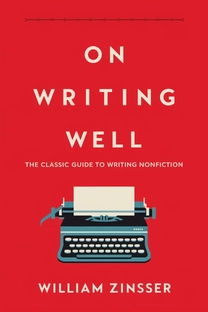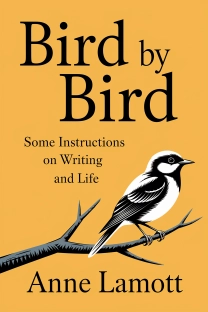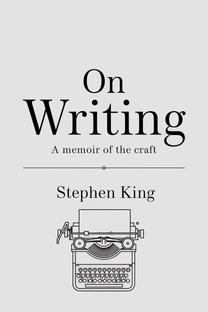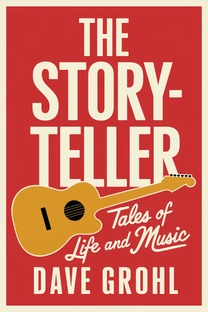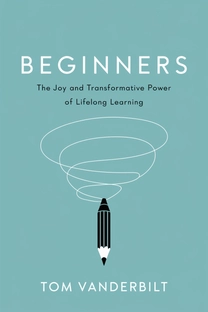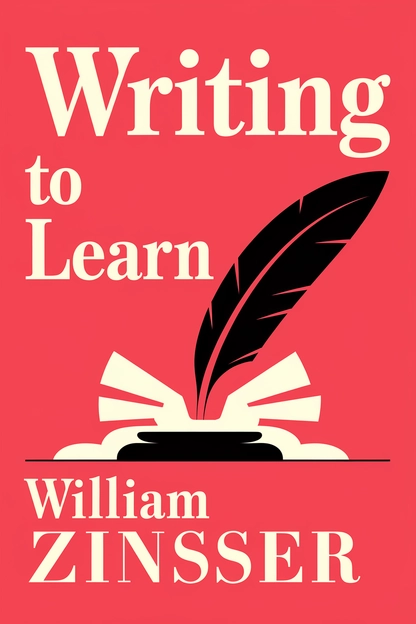
Writing to Learn
by William Zinsser
Brief overview
This book shows you how writing is not only a way to communicate what you know but a way to discover what you think. It explores why people often fear writing and how overcoming that fear can help them understand and engage with subjects they once avoided. By reading it, you will see how writing can unlock new insights, whether you’re drawn to science, mathematics, history, or any other field.
Introduction
Welcome to an approach that transforms writing from a chore into a powerful thinking tool. Many of us dread putting words on paper, especially in areas we find difficult. Yet this book reminds us that writing is just thinking on paper. That simple shift of perspective can help us find structure for scattered ideas and deepen our knowledge.
Rather than labeling ourselves as “math-minded” or “words people,” we can use writing to bridge these false divides. By telling ourselves that writing belongs only in an English class, we miss the chance to illuminate complex scientific research or capture the humanity in a historical event. Here, writing is woven across every field.
In these chapters, you’ll see how research, reflection, and the written word intertwine. You’ll follow students learning math by composing short essays or scientists reviewing their lab reports with an eye for narrative. You’ll notice that in every subject, writing can reveal excitement and unravel confusion.
Think of this as an invitation. No matter your background, you can develop clarity of thought by organizing words on a page. And by writing more, you learn more about any topic that intrigues you.
Rediscovering the Purpose of Writing
Why do we learn to write in the first place? Often, we’re taught that writing is about polishing grammar or avoiding spelling errors. But the deeper value of writing is to discover what we actually think. When we line up words to make sense of our experiences, we see patterns and notice hidden details.
In this book’s view, writing doesn’t just convey finished ideas; it helps form the ideas themselves. Students or professionals facing intimidating subjects—like chemistry or advanced economics—start to master those fields by writing short, focused pieces. Putting theories into sentences forces us to pick the correct words and ensure our reasoning is solid.
When writing about a topic we love, we strengthen our enthusiasm by describing it to others. If a student loves history, for instance, shaping a clear narrative of historical events can bring those old stories vividly to life. And if a student is unsure about math, writing about how they solve problems can reveal the deeper logic behind the equations.
In short, writing is never just about sentences; it’s about discovery and clarity. By writing often—about everything from cosmic theories to everyday tasks—we refine our minds. Step by step, we learn to see ideas take shape and watch our own thinking sharpen.
What is Writing to Learn about?
"Writing to Learn" by renowned author William Zinsser is not just another book on writing; it serves as a roadmap to intellectual discovery and comprehension. Zinsser contends that effective writing can dissolve the barriers often encountered in subjects such as science, math, and history, transforming them into engaging narratives. Through a blend of practical advice and insightful examples, the book illustrates how writing is integral to understanding and mastering complex subjects.
The crux of "Writing to Learn" lies in its powerful premise: writing is a thinking tool. Zinsser demonstrates that writing is not merely about communication but about learning and discovery. By embracing the written word, readers can delve deeper into subjects they might have previously avoided, gaining an enriched perspective that opens up new realms of inquiry and understanding.
Review of Writing to Learn
William Zinsser's "Writing to Learn" brilliantly captures the intersection between writing and intellectual growth. The book's strength lies in uncovering how writing transcends mere communication, serving as a process of discovering new ideas and clarifying thoughts. Zinsser's approach is refreshing, as he paints writing as a universal skill that complements every field—from math to music, science to humanities.
The book's practical applications are its gold, teaching readers how to dissect complex ideas and piece them into cohesive narratives. It dismantles the fear associated with academic writing, emphasizing that it's not about hiding behind jargon, but about clarity and honesty. Zinsser's conversational style keeps the content accessible to all levels of readers—highlighting that it's about human connection, regardless of the subject matter. By showing how writing habits can enhance creativity and critical thinking, Zinsser makes the book relevant to a wide audience, from students to professionals.
Ultimately, "Writing to Learn" is highly recommended for anyone wishing to approach subjects with fresh eyes and confidence. It convincingly argues that through writing, we learn more about ourselves and the world around us, regardless of our academic or professional paths.
Who should read Writing to Learn?
- Students of All Disciplines: This book's approach to using writing as a tool for discovery and learning makes it indispensable for students aiming to deepen their understanding of any subject.
- Educators and Teachers: The insights into how writing can unlock creativity and comprehension are invaluable for educators looking to cultivate these skills in their students.
- Professionals in Scientific and Technical Fields: Those in data-driven roles can benefit from improved clarity and explanation of complex ideas, enhancing both personal analytics and team communication.
- Writers and Aspiring Authors: Anyone passionate about enhancing their craft will find Zinsser's reflections on writing style, clarity, and accessibility enriching.
- Life-long Learners: Curious minds seeking to connect disparate disciplines and explore new ideas will appreciate the book's focus on writing as an engaging learning tool.
About the author
Book summaries like Writing to Learn
Why readers love Mindleap
10-Minute Book Insights
Get the core ideas from the world's best books in just 10 minutes of reading or listening.
Curated For You
Discover your next favorite book with personalized recommendations based on your interests.
AI Book ExpertNew
Chat with our AI to help find the best book for you and your goals.
Reviews of MindLeap
Love how I can get the key ideas from books in just 15 minutes! Perfect for my busy schedule and helps me decide which books to read in full.
Alex R.
The summaries are incredibly well-written and the audio feature is perfect for my commute. Such a time-saver!
Jessica M.
Great app for personal growth. The insights are clear and actionable, and I love how they capture the essence of each book.
Chris P.
The app is beautifully designed and the summaries are top-notch. Definitely worth every penny!
Sarah K.


